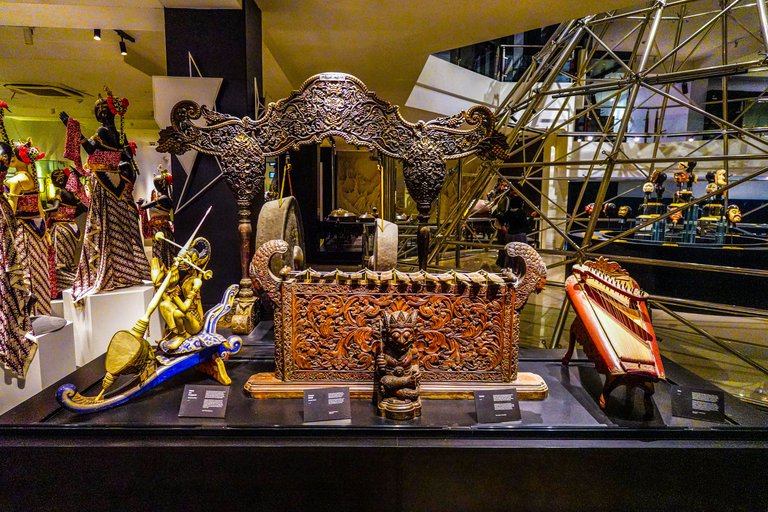
Yogyakarta Adventure #1 - The Magnificent & Mesmerizing Prambanan Temple
Yogyakarta Adventure #2 - Exploring the Artistic Exhibition of Sonobudoyo Museum
Yogyakarta Adventure #3: Unearthing the Treasures of Sonobudoyo Museum (Part-1)
Alright, Hivers, let's get back into the story! Referring to various studies and cultural references, Wayang, traditional Javanese puppet theatre, and Keris, a distinctive, asymmetrical dagger, are integral parts of Indonesia’s cultural and spiritual heritage. Wayang performances, using intricate puppets, narrate epic tales from Hindu mythology, historical legends, and moral stories. The art form, recognized by UNESCO as a Masterpiece of Oral and Intangible Heritage of Humanity, plays a significant role in preserving Javanese culture. Keris, on the other hand, is not just a weapon but a spiritual object believed to possess mystical powers. Each Keris, with its unique design and craftsmanship, reflects the cultural values, history, and identity of its maker and owner.
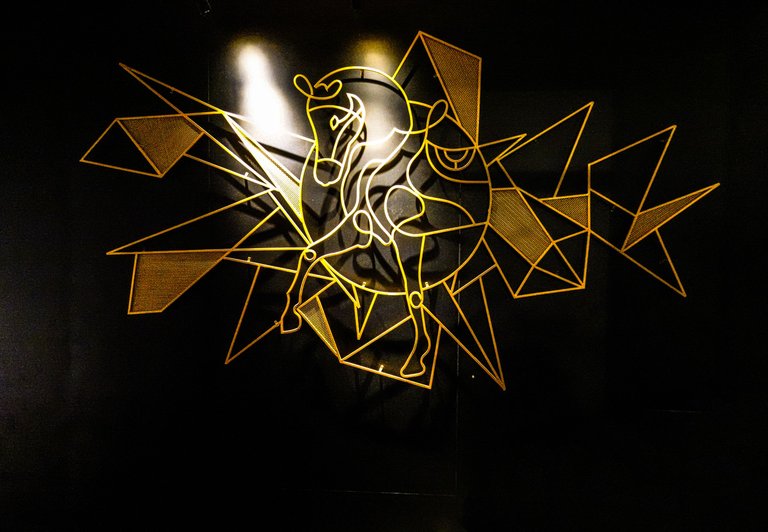
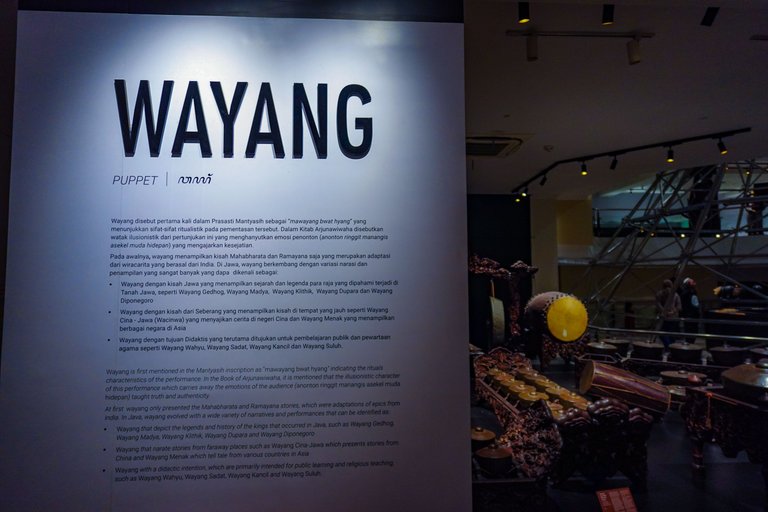
The first section I visited was the Wayang display. Based on the information in the museum, Wayang was first mentioned in the Mantyasih inscription as "mawayang bhwat hyang," indicating the ritualistic characteristics of the performance. In the book of Arjunawiwaha, it is also referred to as an illusionistic art that evokes the emotions of the audience (anonton ringgit manangis sakelu muda nira), symbolizing prosperity. Initially, Wayang depicted stories from the Mahabharata and Ramayana, which were adaptations of epics from India. In Java, Wayang evolved with a wide array of narratives and performances that can be identified as:
- Wayang that tells the legends and historical stories of kings and heroes who lived in Java, such as Wayang Gedhog, Wayang Madya, Wayang Klithik, Wayang Dupara, and Wayang Diponegoro.
- Wayang with narratives from China and other countries in Asia, such as Wayang Cina-Jawa, which narrates stories from Chinese legends and Wayang Menak, which presents stories from Arabic cultures.
- Educational Wayang specifically intended for public learning and religious teachings, such as Wayang Wahyu, Wayang Sadat, Wayang Kancil, and Wayang Suluh.
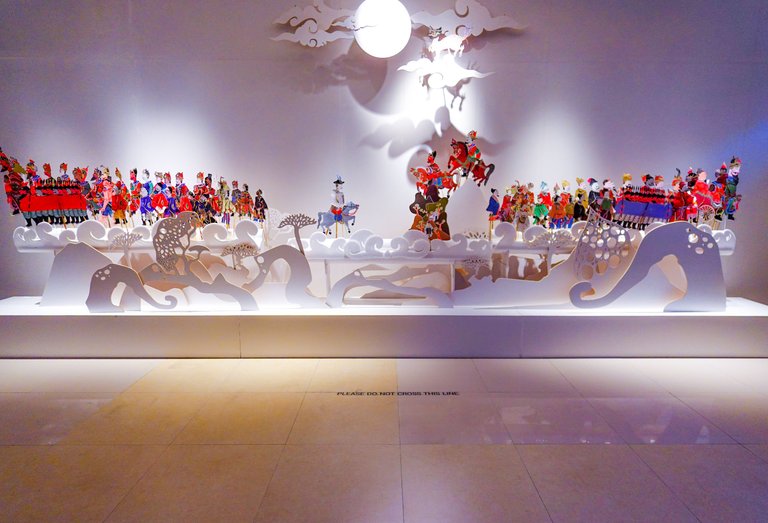
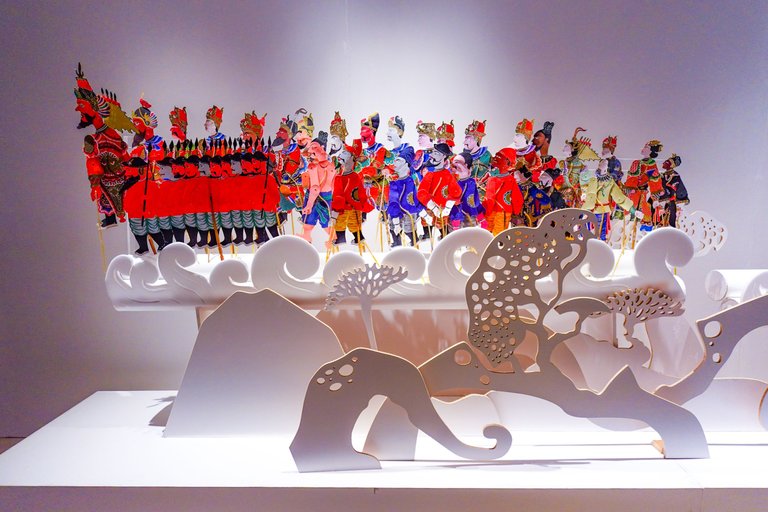
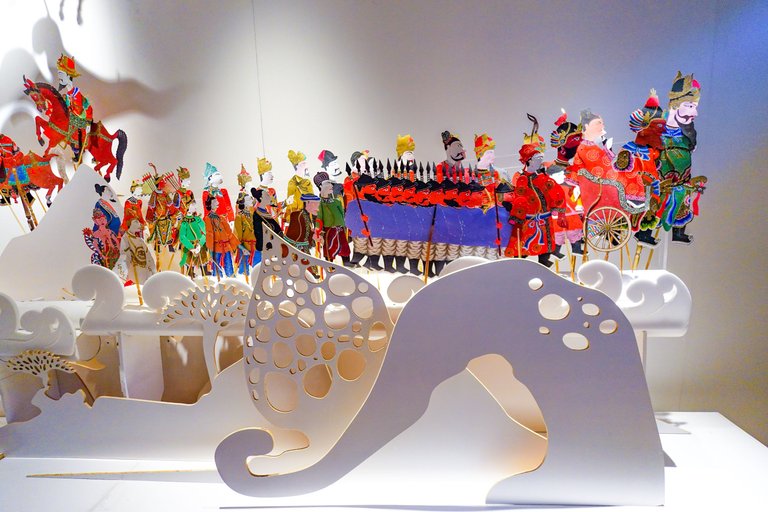
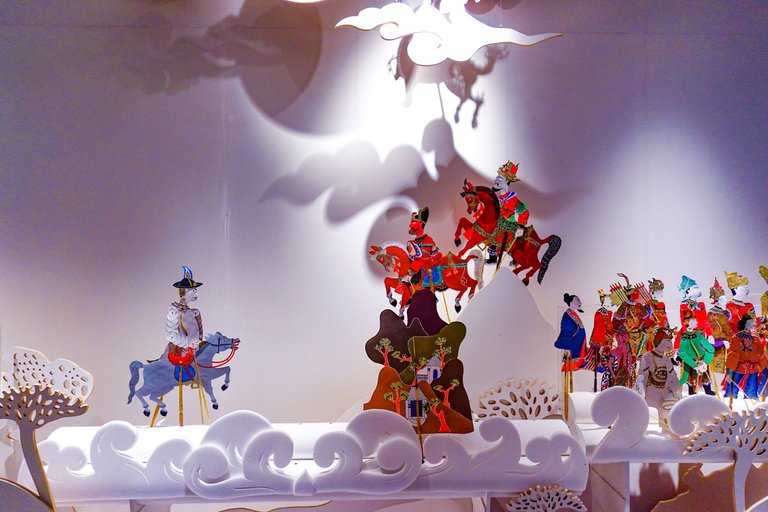
After immersing myself in the world of Wayang, I moved on to the next section: the Performing Arts room. This room is dedicated to showcasing traditional dances, highlighting the rich and diverse dance forms from various regions of Indonesia. The costumes, intricate movements, and vibrant history of these traditional dances are beautifully displayed, providing a glimpse into the cultural significance of dance in Indonesian society.
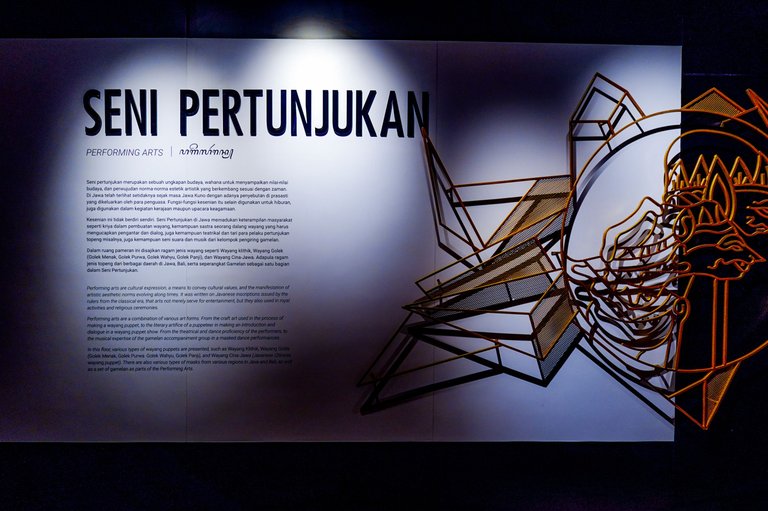

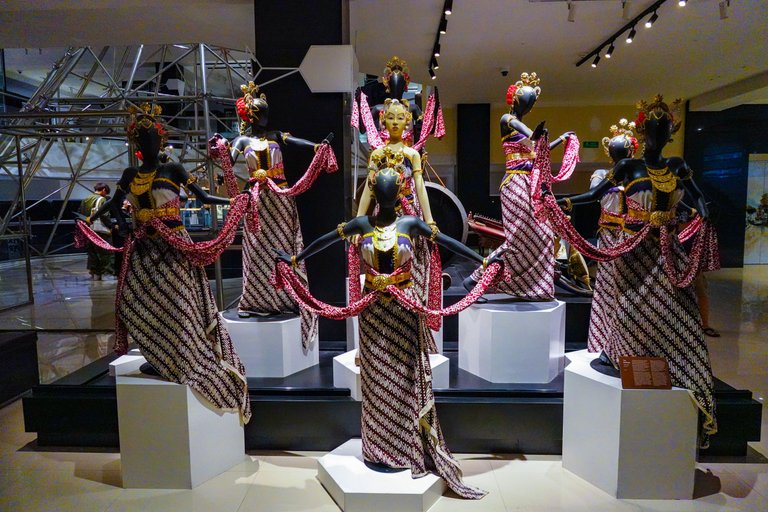

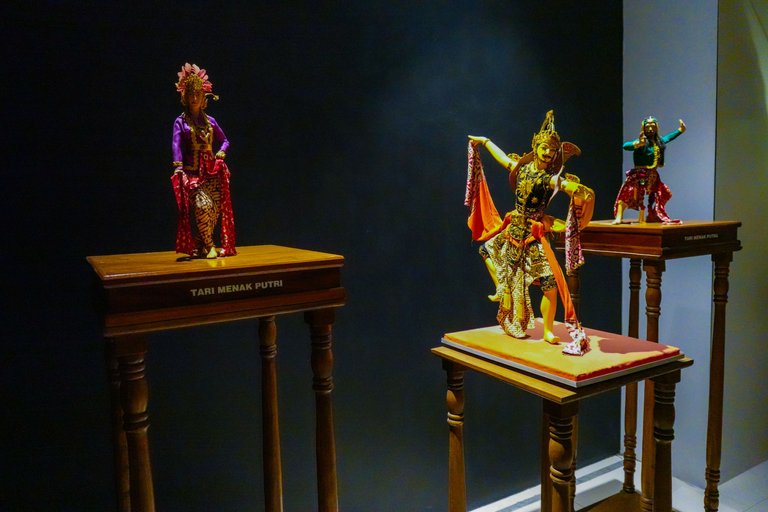
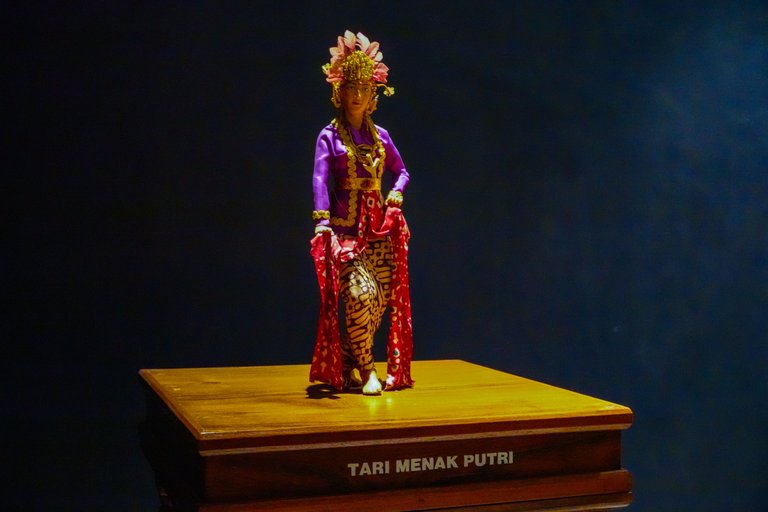
The next room I visited was the Keris and Weapon section. Here, I discovered that Keris exist in various sizes and types based on their uses. There are long Keris, short Keris, wavy Keris, and straight Keris. Each type has its own unique characteristics and functions. Long Keris are often associated with ceremonial uses, while short Keris might be more practical for personal protection. The wavy Keris, known as luk, are believed to have stronger spiritual powers compared to the straight ones.
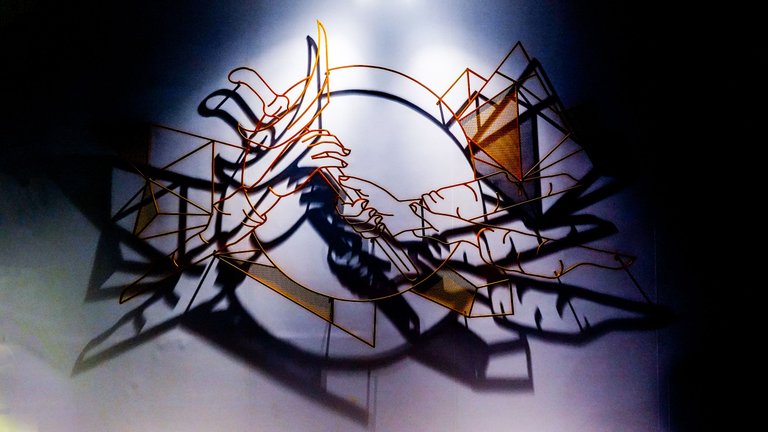
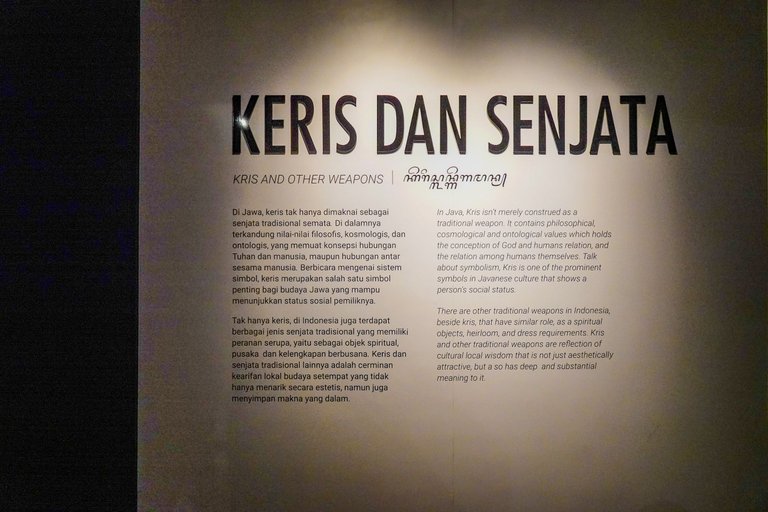
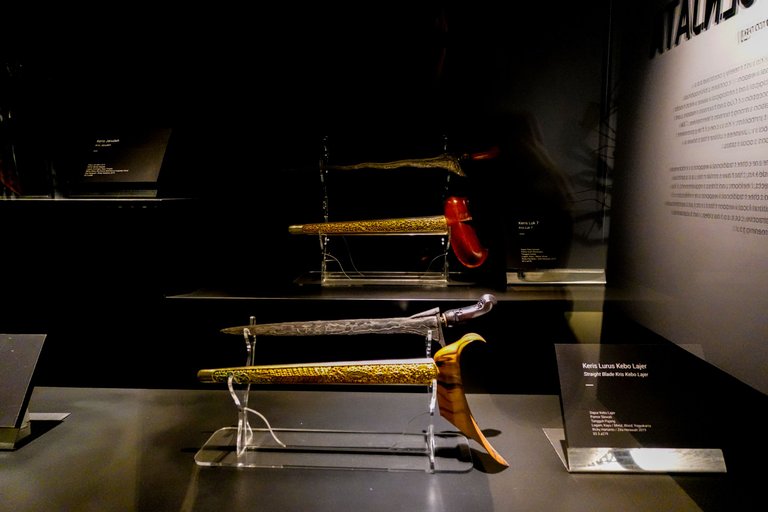 |  |
|---|
The hilts of Keris also feature a wide variety of carvings, influenced by regional styles, cultural symbols, and the status of the owner. For example, a Keris hilt from Central Java might be adorned with intricate floral patterns, while one from Bali could feature more mythological motifs. The materials used for the hilts can range from wood and ivory to precious metals, each adding to the Keris’s significance and value.

Based on the information displayed in the museum, here are some terms related to Keris:
- Dhapur: This refers to the various shapes of the blade, whether straight or wavy. There are hundreds of categories for Keris shapes, each region having its own unique names and classifications.
- Pamor: A pattern on the blade’s surface created through the forging process, mixing metals with different chemical compositions. The word "pamor" is derived from "awor" or "amor," meaning to mix or blend.
- Tangguh: This term describes the blade's style, relating to the provenance and the period of the Keris. Tangguh is determined by the blade’s style, material appearance, and forging technique.
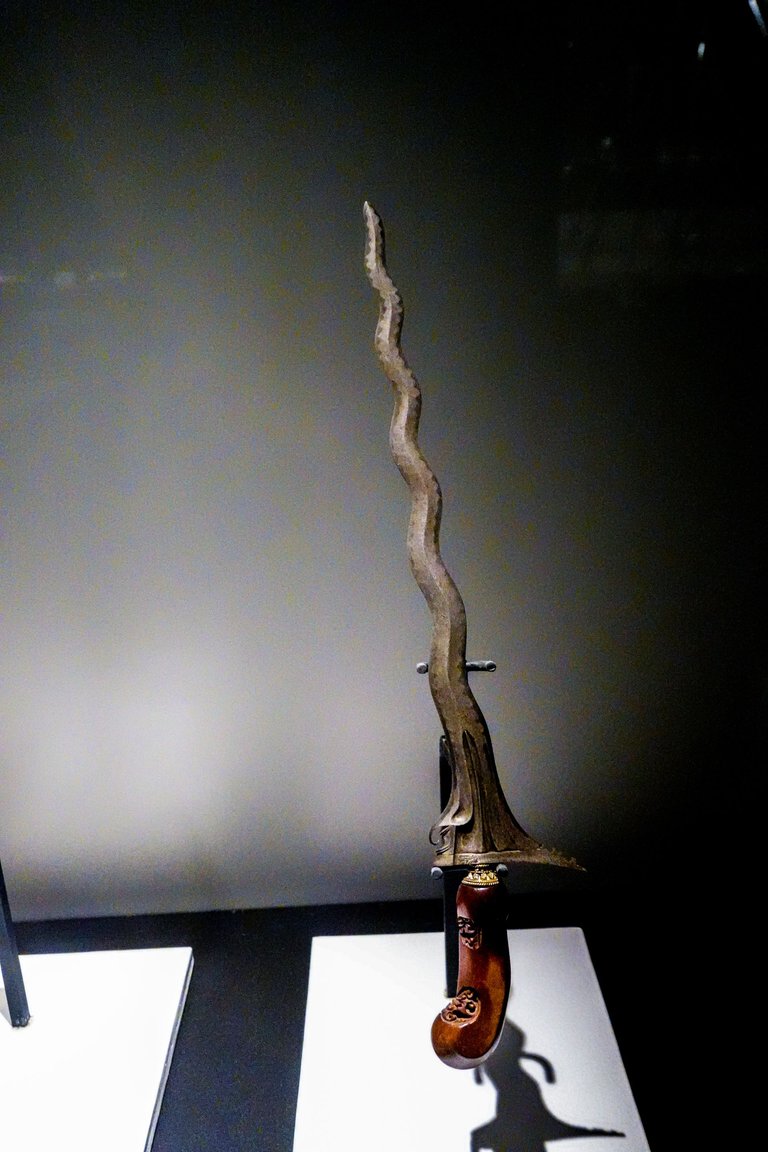 | 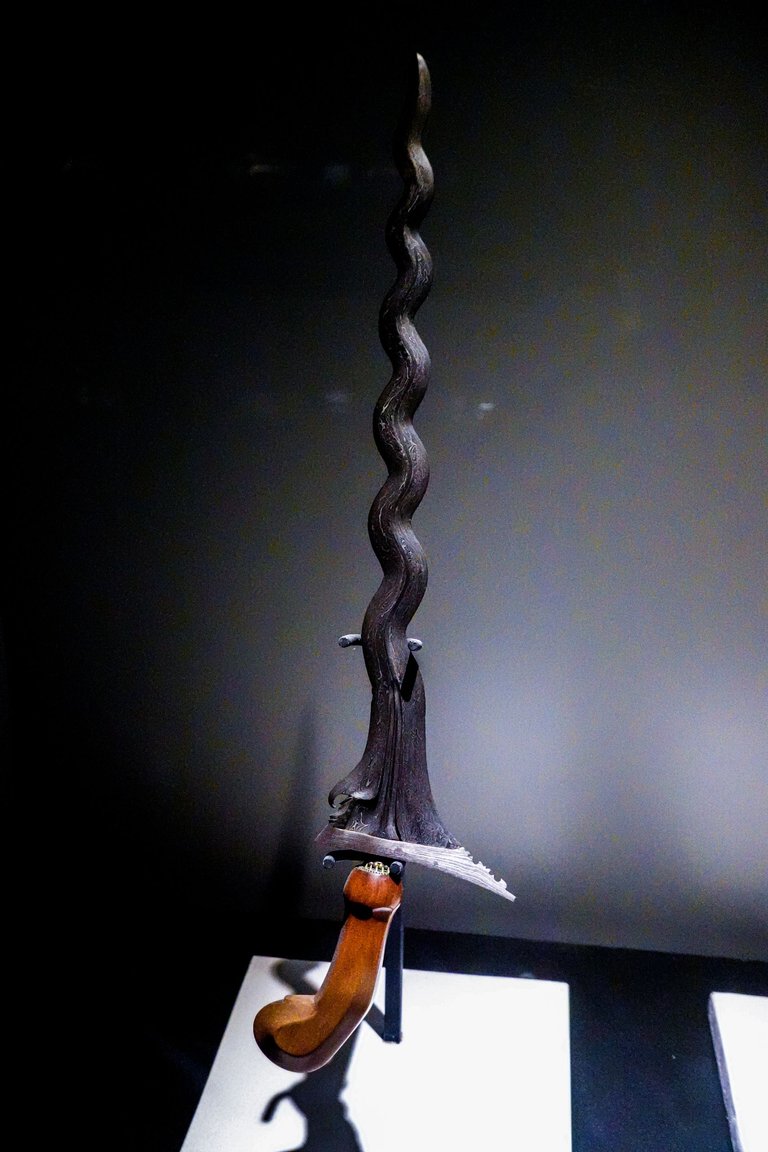 | 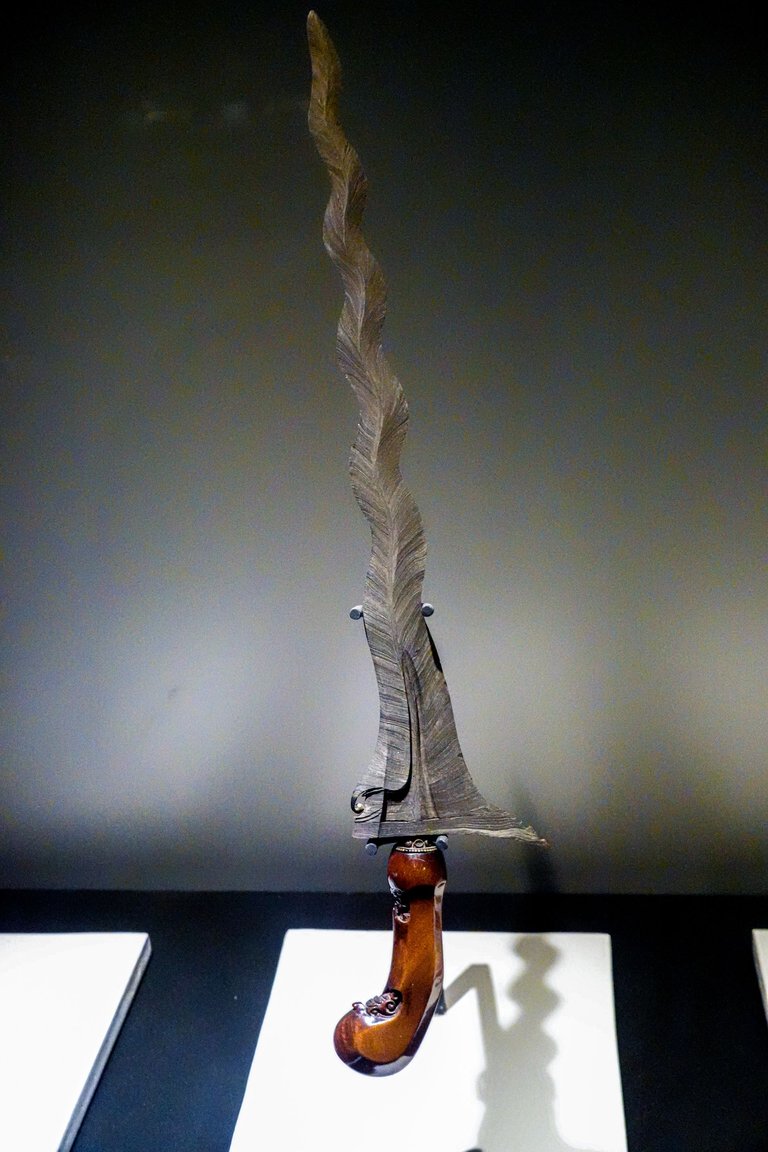 | 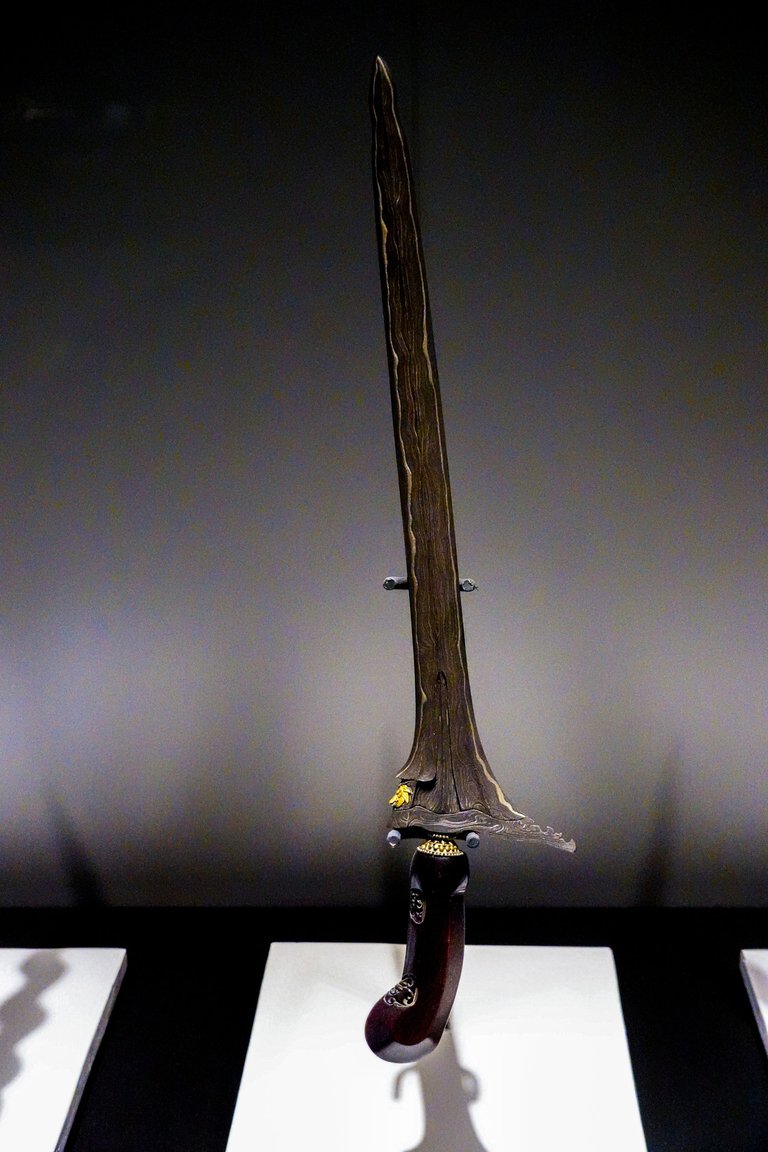 | 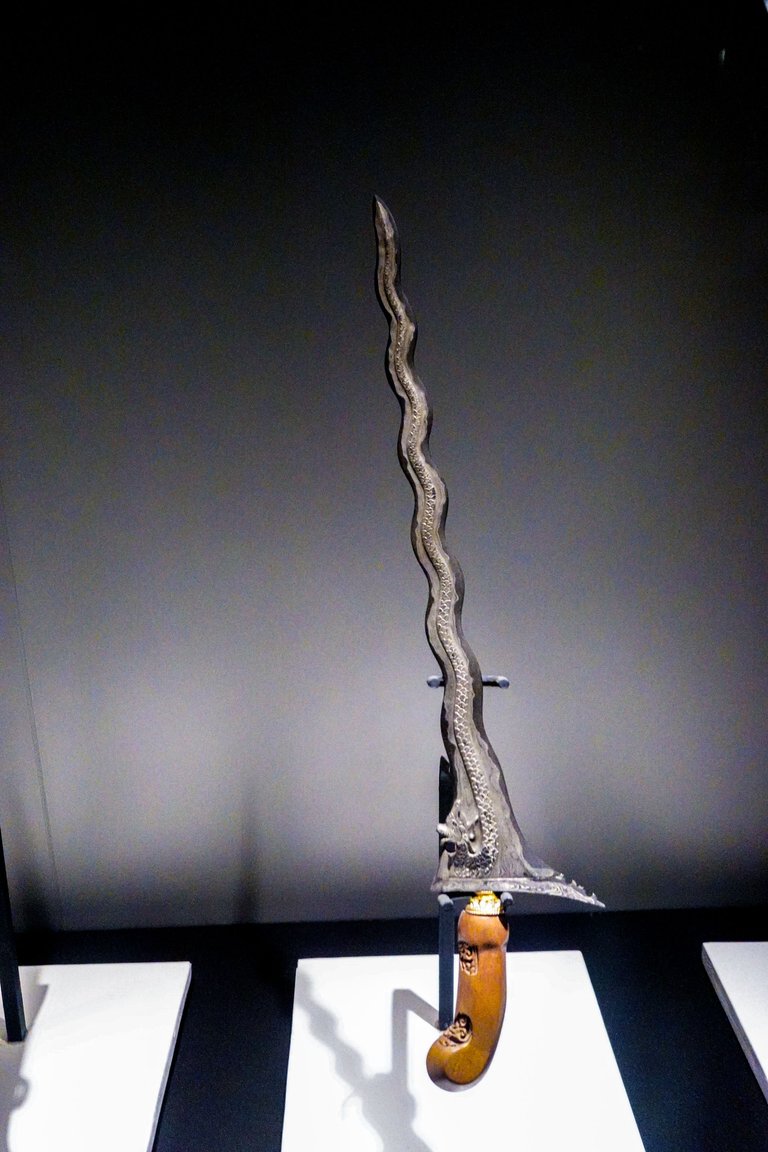 |
|---|
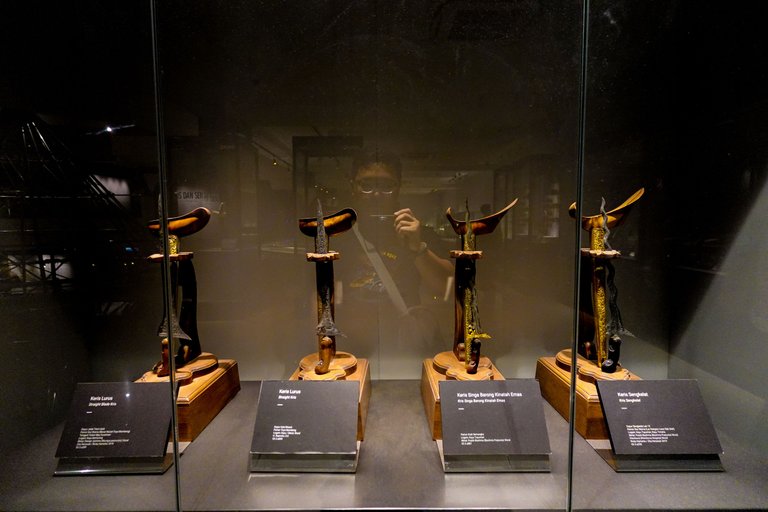

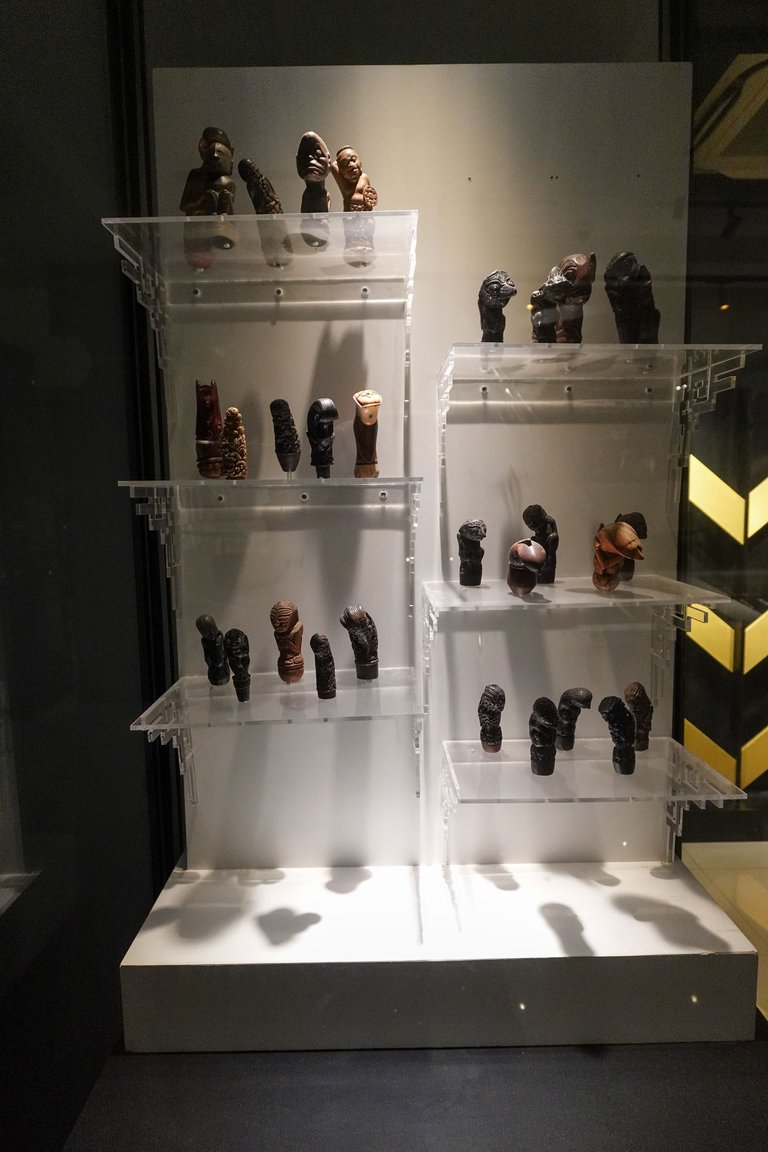 | 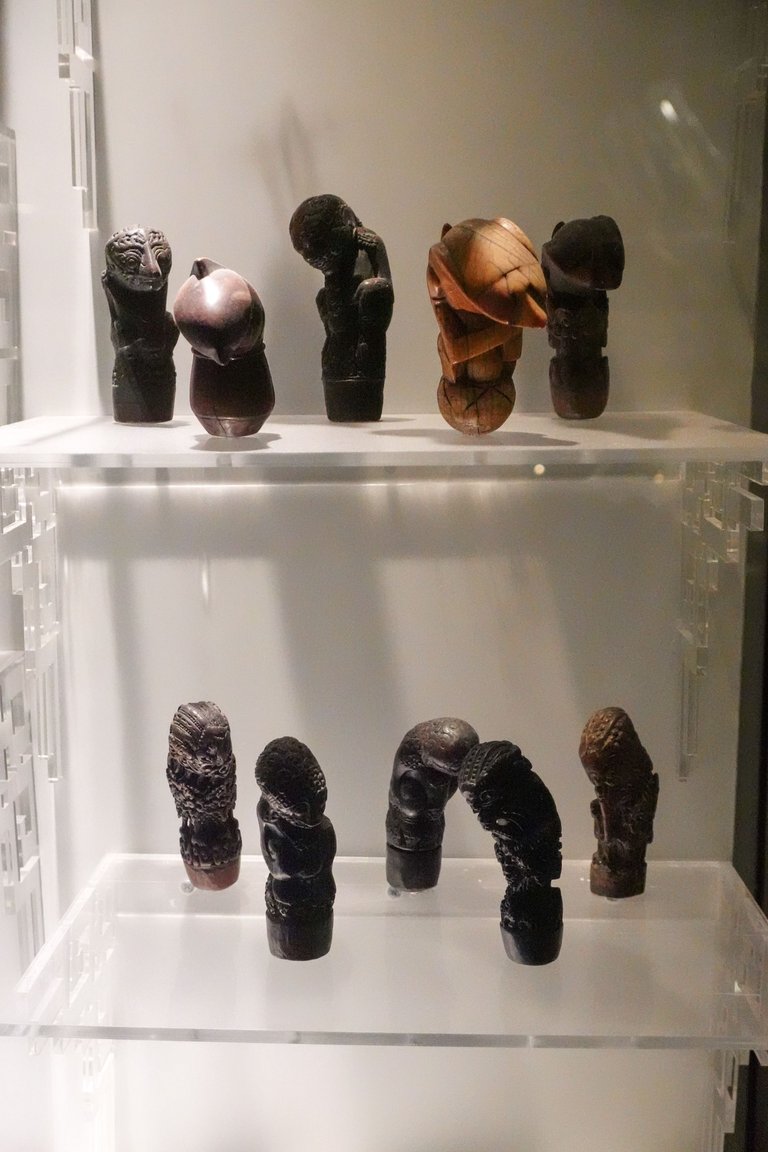 |
|---|
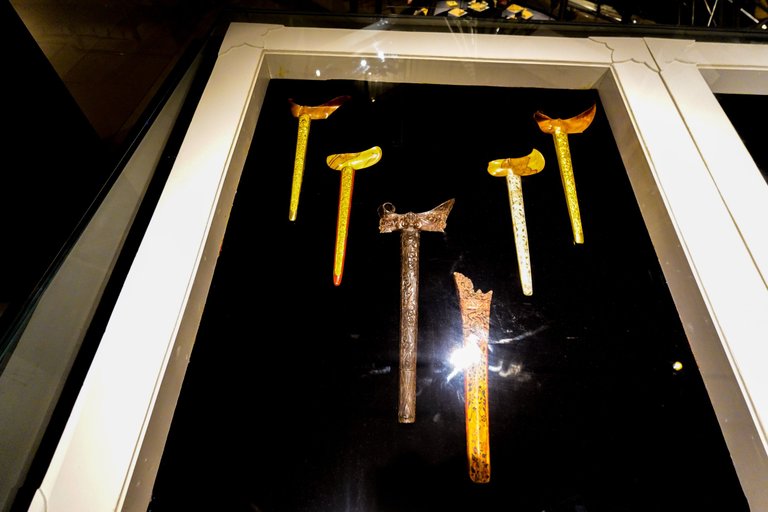
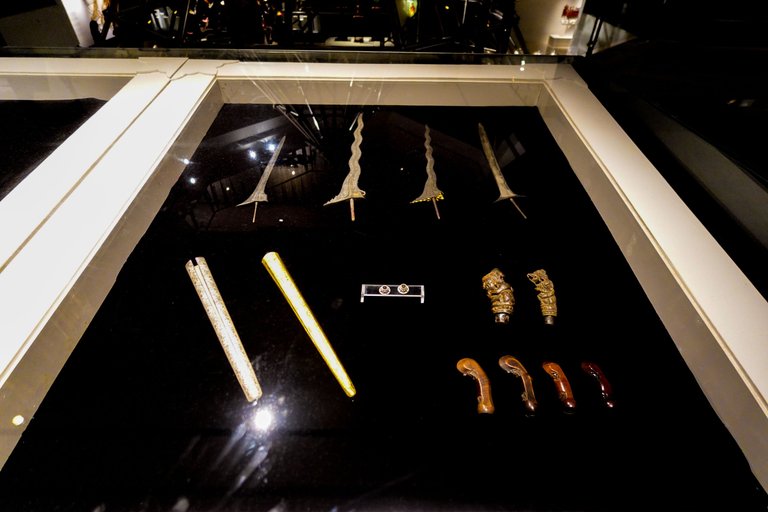
It is also noteworthy that traditionally, Keris are usually worn at the back of the body, tucked into a waist sash, symbolizing readiness and respect. In the museum, there is a display showing how Keris are worn, providing visitors with a visual understanding of this traditional practice.

The last room I visited is the Life Cycle room, which is visualized through batik. Life cycle is understood as a series of phases changing in a person's growth. These phases are grouped into three: prenatal and birth, growth and marriage, and death. Each of these phases is related to symbols, values, and expectations. In Javanese culture, the manifestation of these symbols is often shown in batik patterns and motifs.
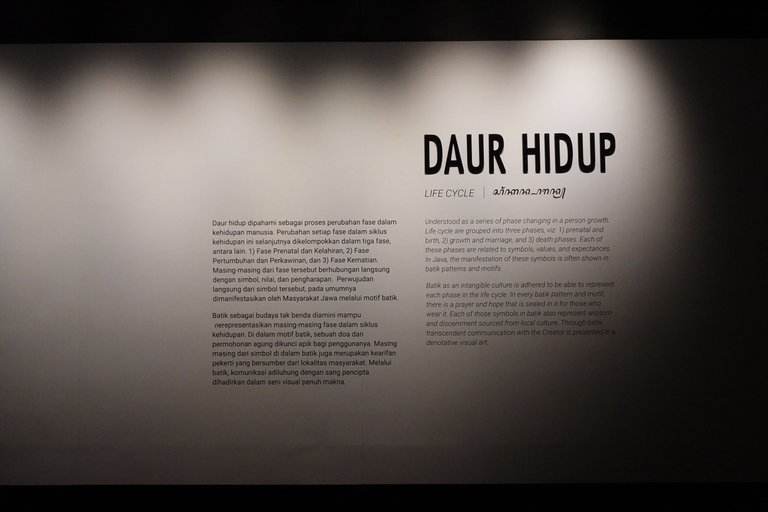
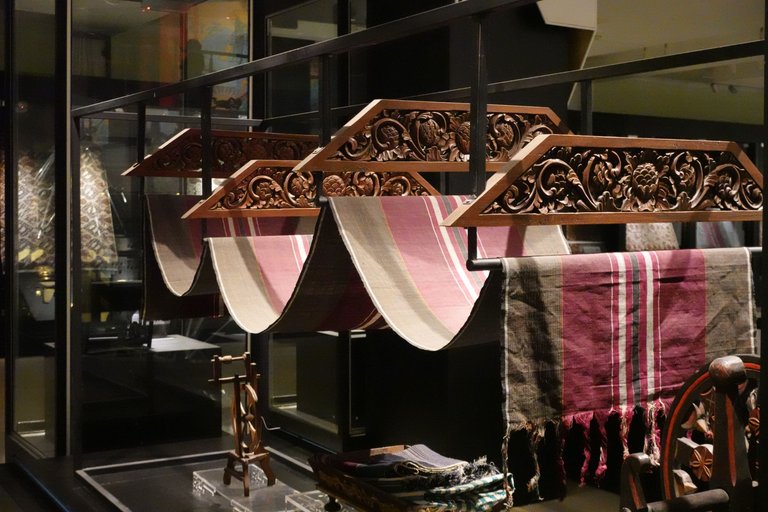
Batik, as an intangible cultural heritage, is able to represent each phase in the life cycle. In every batik pattern and motif, there is a prayer and hope that is sealed in it for those who wear it. Each of those symbols in batik also represents wisdom and discernment sourced from local culture. Through batik, transcendent communication with the Creator is presented in a denotative visual art.
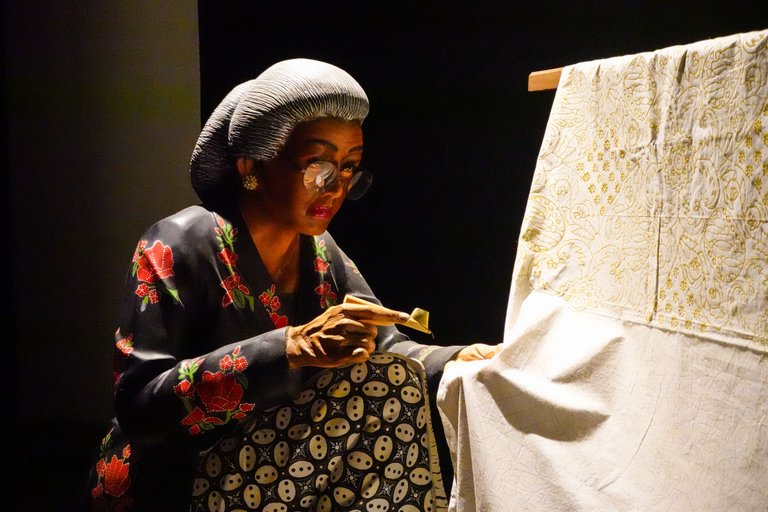
In this room, there are numerous batik fabrics with various motifs, each carrying its own unique meaning. The diversity of patterns and the rich cultural significance embedded in them make this collection truly fascinating.
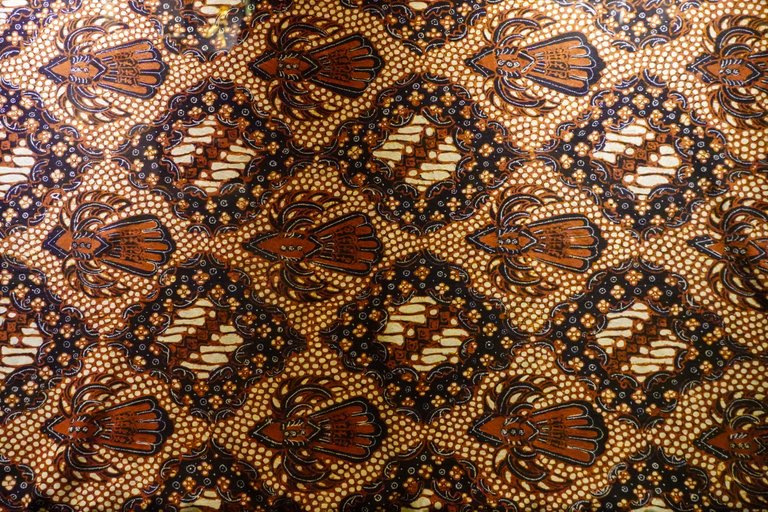
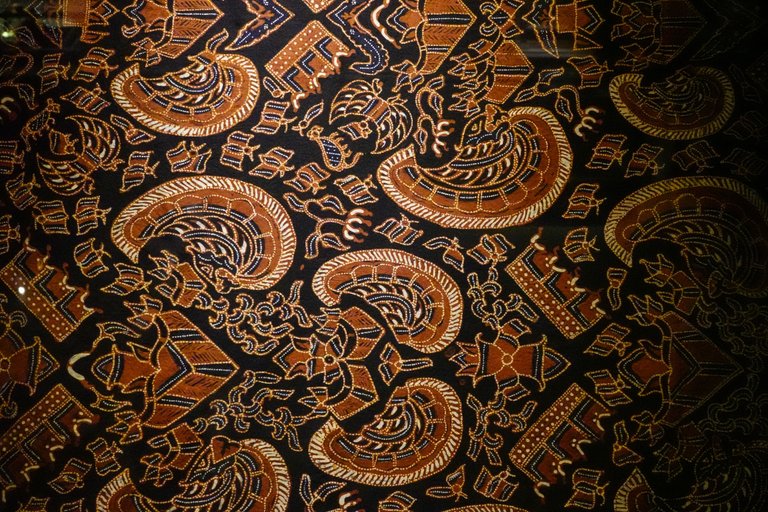
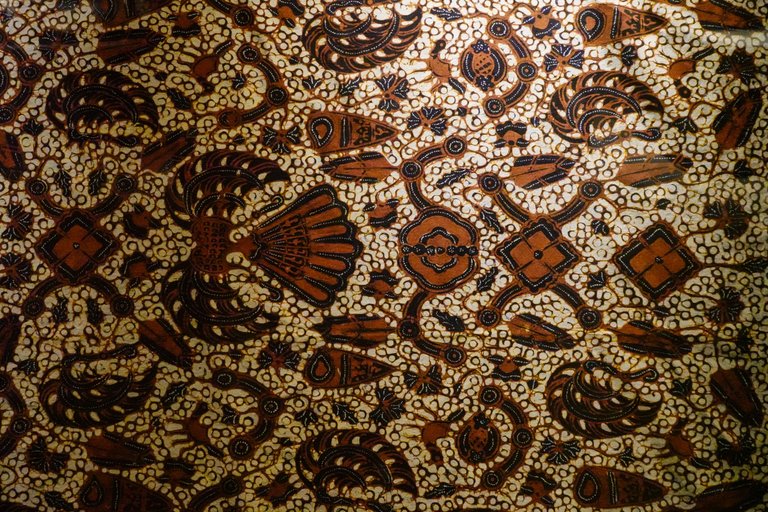
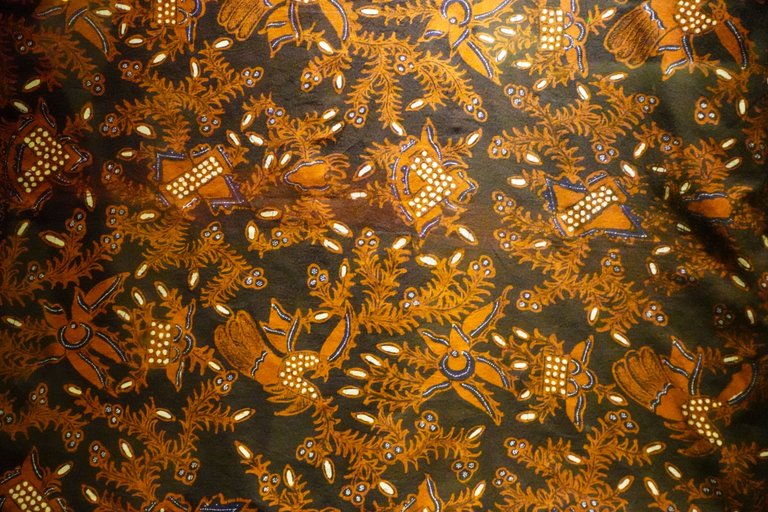
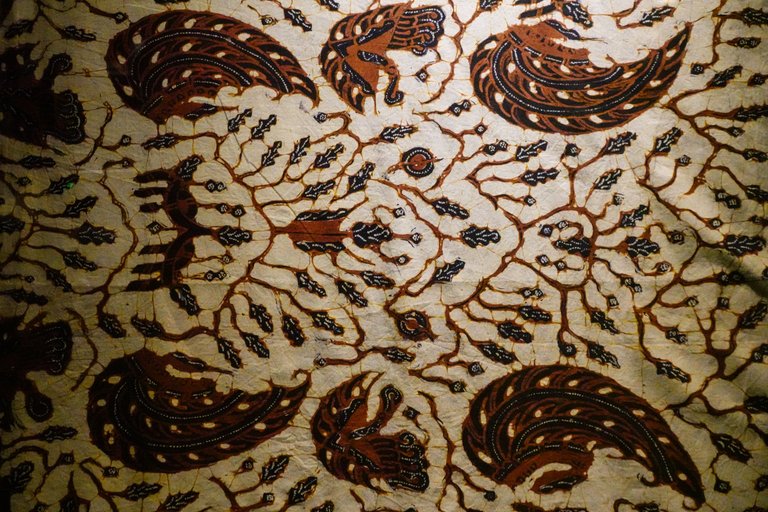
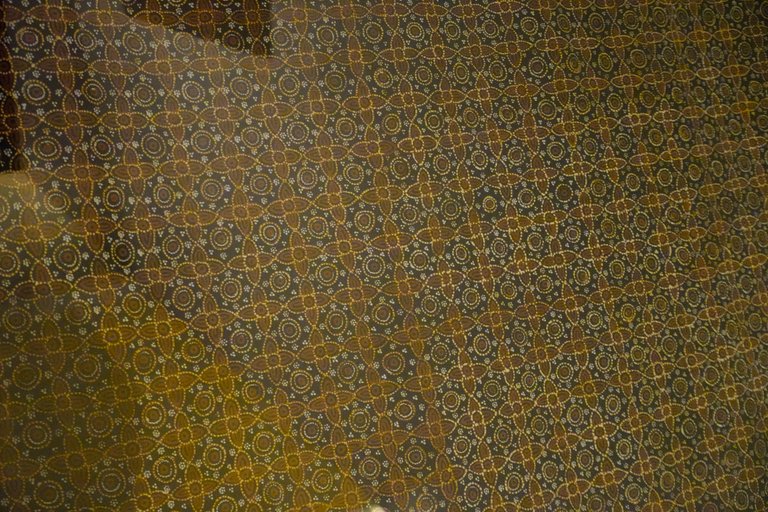
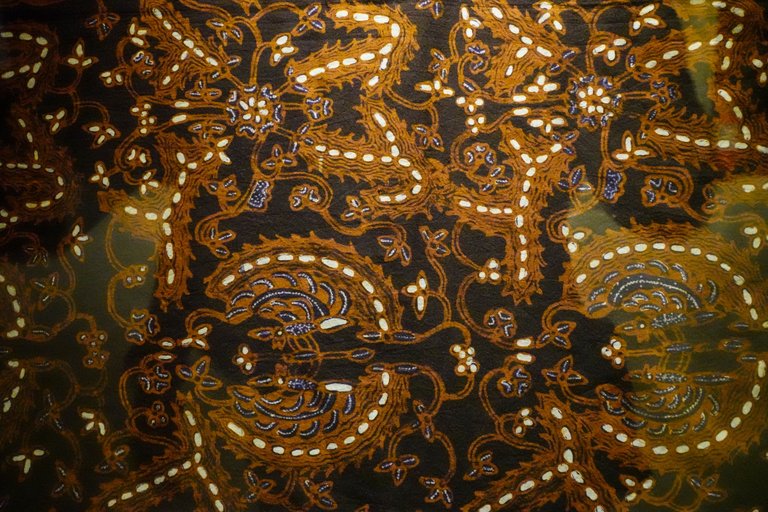
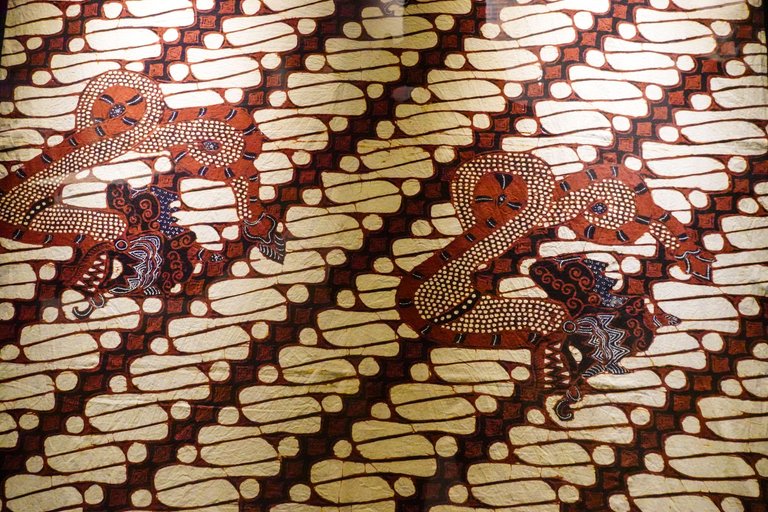
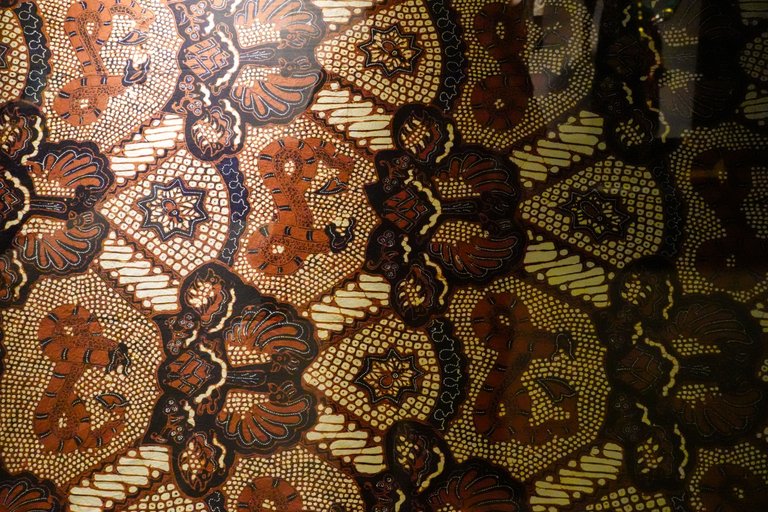
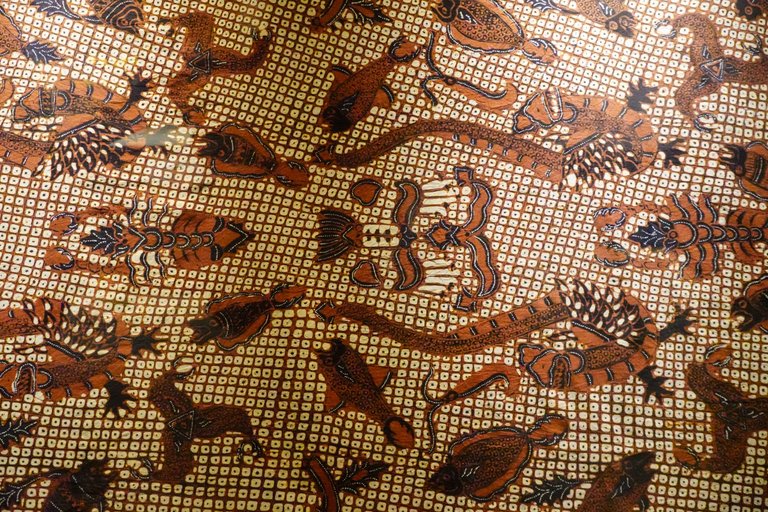
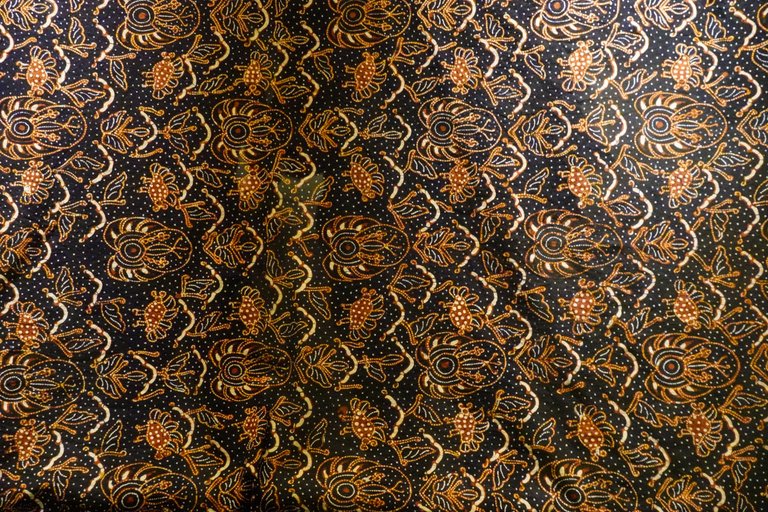
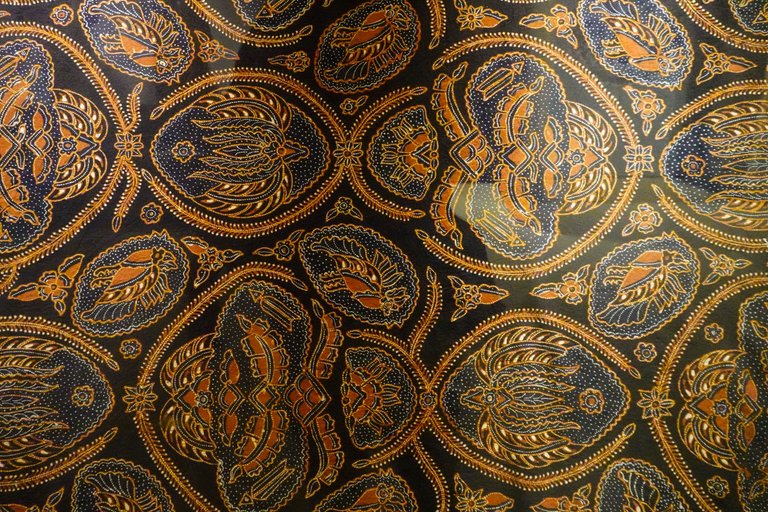

Well, here we are at the end of the story for the four rooms we explored at the Sonobudoyo Museum. We started with the enchanting world of Wayang, moved on to the vibrant Performing Arts room showcasing traditional dances, then delved into the mystical Keris and Weapons section, and finally marveled at the rich symbolism in the Life Cycle room visualized through batik.
But don't worry, the adventure isn't over yet! In the next post, I'll be sharing the final chapter of my visit to the Sonobudoyo Museum, where we'll highlight the captivating audio-visual room. Stay tuned, Hivers! You won't want to miss it.
